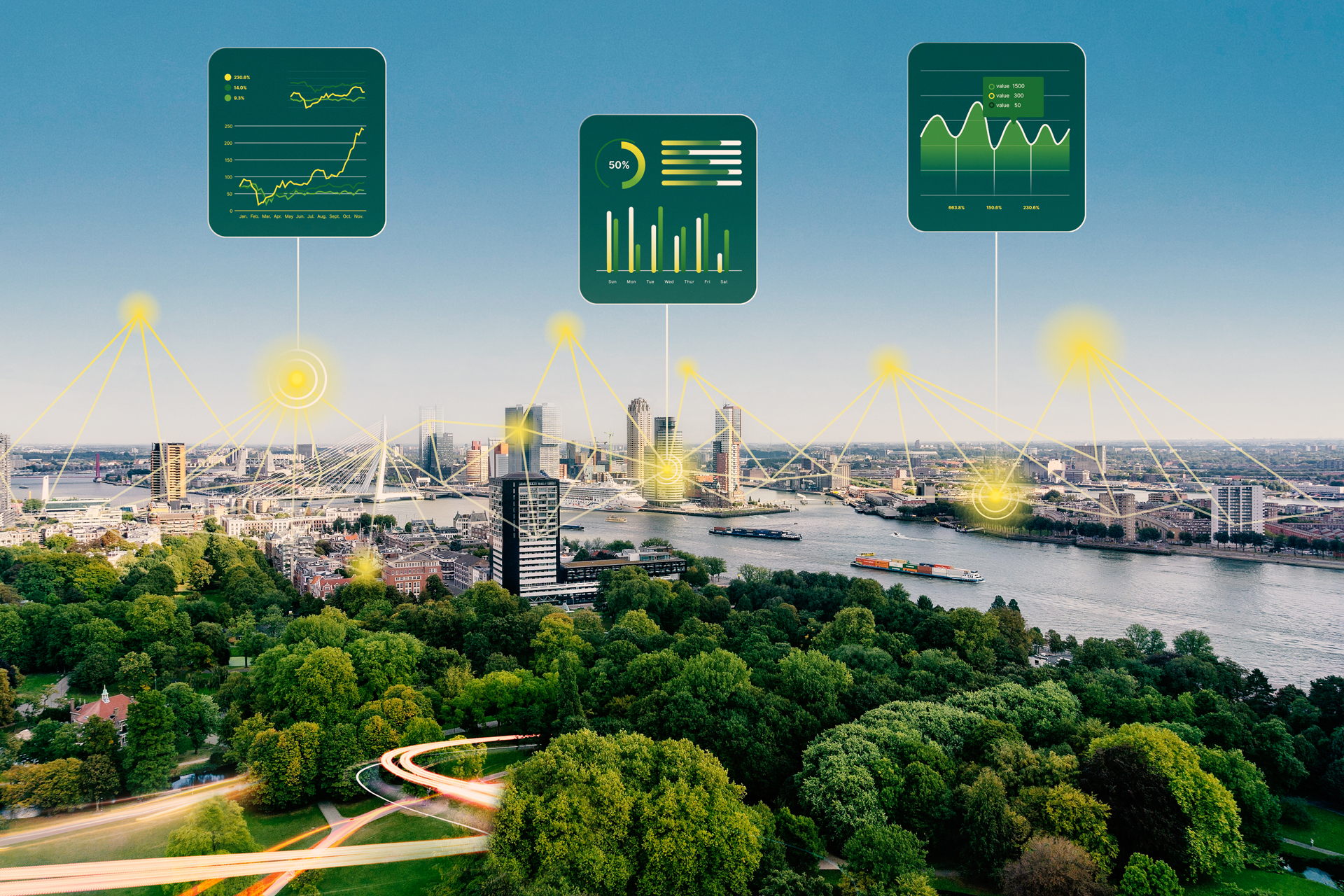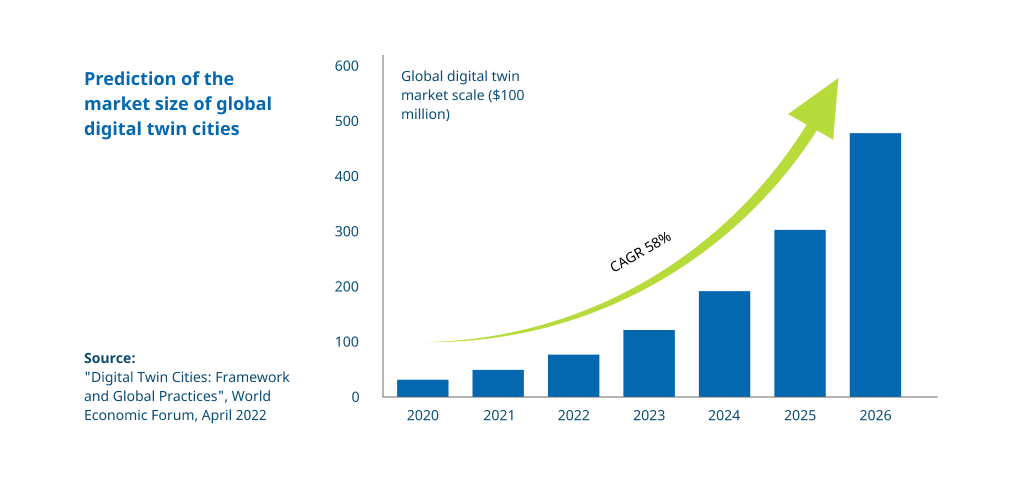How “digital twins” of real cities can help guide innovation and transform our lives
From ‘SimCity’ to better urban reality
December 27, 2022

As a child, I loved playing SimCity, a popular video game which focused on open-ended city-building. Although more than 30 years ago the gameplay and graphics on my PC were rudimentary, the game was revolutionary. It introduced the concept of simulation in which several realistic, well-defined rules determine what happens to the characters and landscapes.
This initial love and understanding of simulations followed me well after my teenage years. At one point, I used simulations to design beam diagnostic instruments of the most complex machine ever built by mankind - the Large Hadron Collider at CERN.
Today, simulations are no longer just there for entertainment, but are actively reshaping innovation and, consequently, the real world.
The rise of the digital twins
Some of these simulations, if sufficiently sophisticated, can become “digital twins”- virtual representations of intended or actual real-world products, systems or processes. Due to their use by global companies and public bodies, simulated and virtual worlds have the potential to transform our lives.
Nvidia, a company best known for their graphics processing units, is using its Omniverse platform to build Earth-2. It’s a massive simulation of the planetary climate system, able to predict the climate in different regions of the globe over decades. Its aim is to enable the development of the best strategies for mitigation and adaptation to climate change and urge climate action by showing us the future more realistically.
Similarly, BMW, a major German car manufacturer is building a simulated factory before starting construction of a physical one. These simulations are providing real-time insights into highly complex, unpredictable systems and help avoid costly mistakes or disasters.
According to
“SimCities” become reality
Many analysts predict that, soon enough, every major city on the planet will have a digital twin inside a virtual world that will revolutionise the way we manage traffic flows, public transport systems, power demand, and more. Some estimate that as many as 500 urban digital twins will be deployed by mid-2020s. The impact on the economies will be significant. A recent WEF report, sees the global digital twin city market reaching nearly $50 billion by 2026. ABI Research, a global technology intelligence firm, estimated that $280 billion can be saved by 2030 through use of digital twins for more efficient urban planning.

As drivers of development, cities are natural ground for innovation and are thus perfect sandboxes to see how simulations can help us with various challenges related to reaching multiple Sustainable Development Goals: building sustainable cities and communities (SDG 11), fostering industry innovation and infrastructure (SDG 9), taking climate action (SDG 13), as well as establishing partnerships to achieve the goals (SDG 17).
For example, Singapore’s use of its digital twin is already highlighted as best practice in the 2021 UNDP Handbook on Smart Urban Innovations. Its 3D virtual model allows new developments to be simulated with great precision. This digital twin is used in planning bicycle lanes and parking lots, taking into account many factors such as road obstacles, tree shading, surrounding facilities, traffic connections and other safety parameters. The model is also very useful for long term planning. Singapore’s ageing population will require major changes to infrastructure, and different actors can now work together virtually to make and test solutions.
The capital of Estonia, Tallinn, aims to use digital twins to increase public participation in urban planning and to track energy consumption. Seoul in South Korea uses it to predict wind paths and inform urban design in a way that reduces spread of forest fires, heat island effect (spots in urban areas with higher temperatures) and spread of fine dust.
Simulations need to be human-centric
What will come next? Simulation of entire societies and testing economic policies in virtual worlds before applying them in the real world? However, creating more complex and ambitious digital replicas raises questions about privacy and cybersecurity.
Many of these digital twins are made possible by a multitude of sensors that track real-world data and movement. Take for example workers at factories with digital twins that may find their every movement followed while a hacker of a digital twin could gain frighteningly precise knowledge about
Digital twins, like the metaverse, also have environmental impact as high-end data storage and processing are energy-hungry processes.
Furthermore, these technologies can be challenging to implement. Even the most basic ones require many elements to be put in place: data-collection capability of urban Internet of Things - sensing networks as well as protocols around data governance, system interoperability, fast data processing, ensuring data quality, security and privacy.
All of these challenges require
Finally, the initial development of digital twins can be costly and complex. Much of the initial investment tends to fall on the public sector, while private companies stand aside for the first few years until they can formulate a clear investment rationale. Even though public bodies may be the ones initially investing, they should engage all stakeholders, especially the private sector, to ensure standardisation and interoperability with future actual and potential users.
Tool for a sustainable future
Nevertheless, digital twins, especially in urban settings offer significant benefits and opportunities for innovation. Remembering, once again, my first brush with urban simulation, playing SimCity, I realised that I enjoyed two things: no one wins or loses, and everything has a solution.
I am aware that digital twins of real cities will never be able to capture reality perfectly, and that there will always be mistakes, like those you see when running a city simulation on a basic PC. Real life, as we know, has high variability, is full of uncertainties and fuzziness and thus cannot be perfectly simulated nor can models serve as perfect guides to tricky questions of policies.
However, I believe that, through the

 Locations
Locations